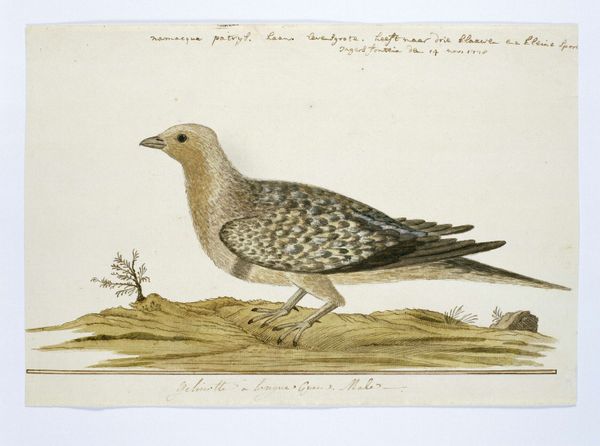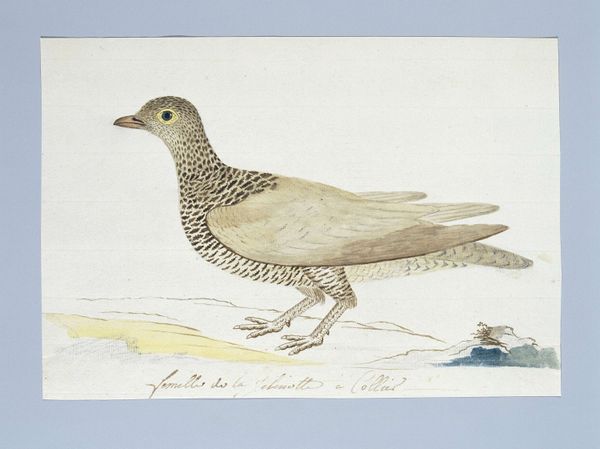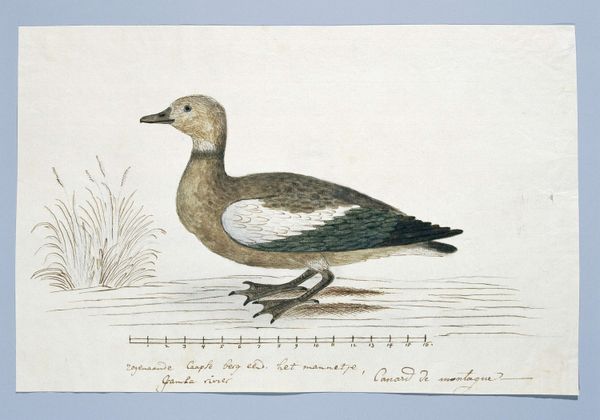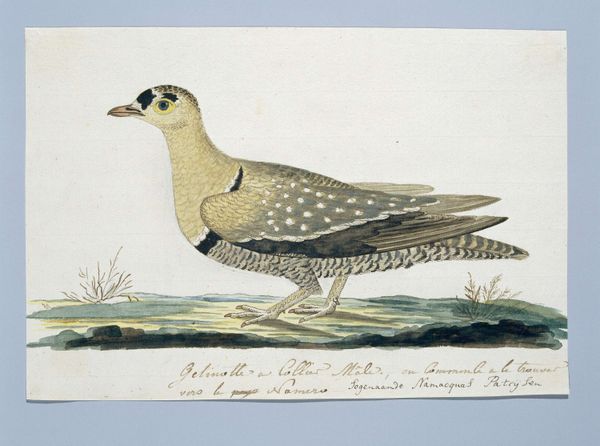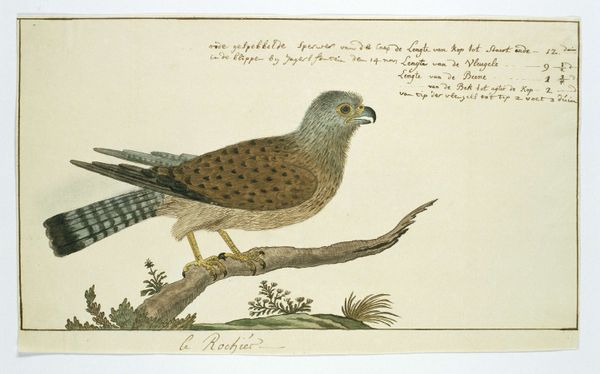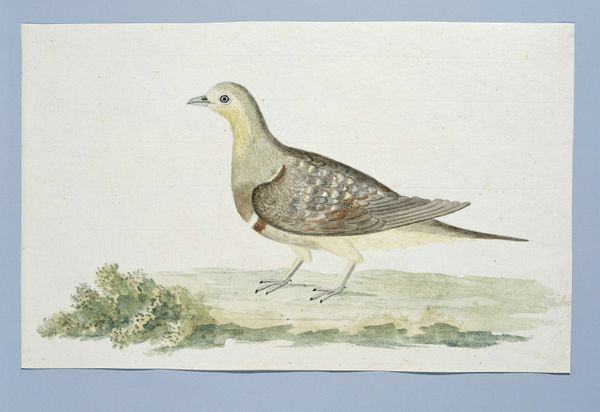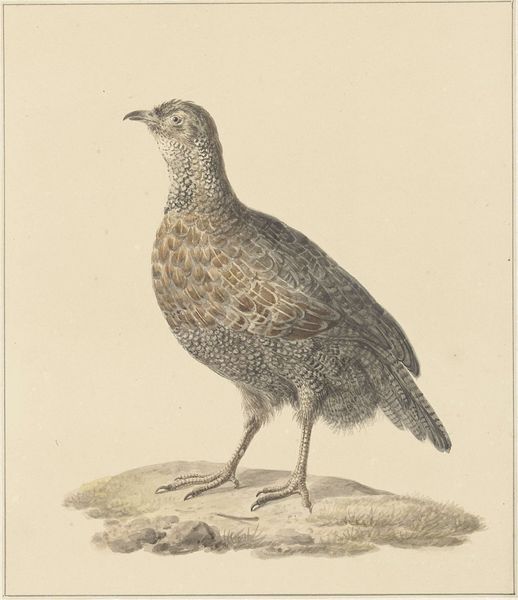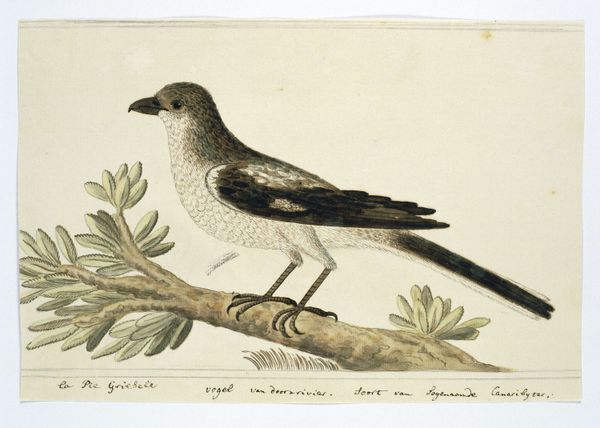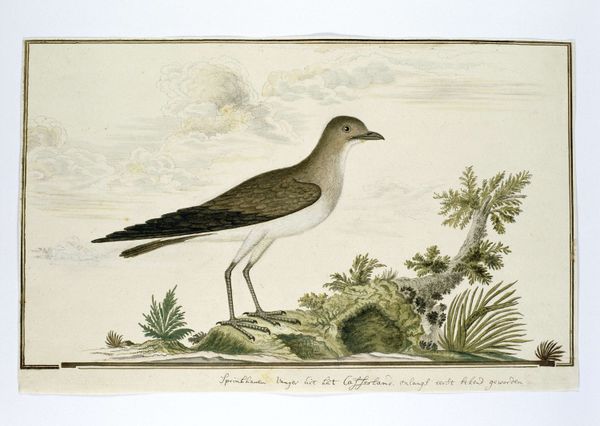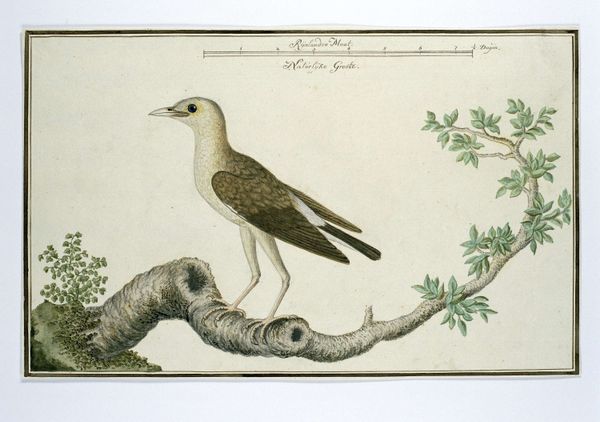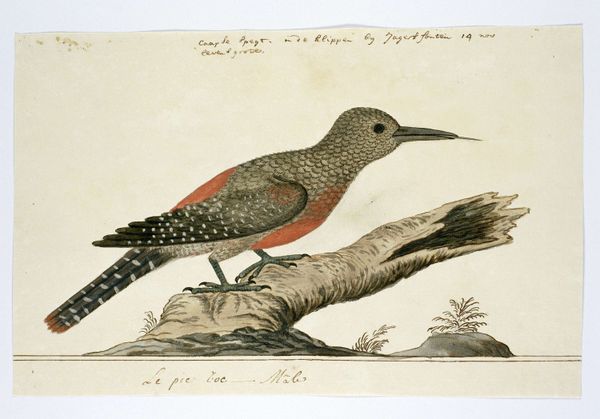
Dimensions: height 660 mm, width 480 mm, height 176 mm, width 290 mm, height mm, width mm
Copyright: Rijks Museum: Open Domain
Curator: This delicate watercolor and ink drawing presents us with a Namaqua Sandgrouse, or Pteroclurus namaqua, created around 1778 by Robert Jacob Gordon. Editor: The muted palette gives it such a tranquil air, yet the detail in the bird's plumage, achieved with such fine hatching, strikes me as quite precise, scientific almost. Curator: Gordon was a military commander and explorer, so this naturalistic style reflects that intersection of scientific observation and Romantic sensibility characteristic of the era. These weren’t just artistic exercises; they were documentation of the world for a European audience. Editor: It's intriguing how the eye is immediately drawn to the tangible – the bird, its speckled feathers painstakingly rendered, and then, the egg! The artist took great care showing its texture and presence within its environment. It sits perfectly with its means of support – the patch of land below. Curator: And within the context of ornithological illustration, it offers insight into colonial encounters and power dynamics. Think about it: who has the power to name, classify, and represent? This act of rendering the bird— literally capturing it on paper – speaks to a broader colonial project of understanding, controlling, and ultimately possessing the natural world. Editor: True, it shows how resource management also takes center stage. This close depiction makes you consider the materials involved: the paper itself, the pigments painstakingly chosen to render this animal accurately. This bird’s image then travels far from its origin to teach the curious viewer its characteristics. Curator: Right. This piece offers a glimpse into how 18th-century Europeans perceived and sought to understand different parts of the world, intertwining scientific curiosity with political ambitions. Editor: It prompts us to consider the journey these raw materials made, and what type of skills Gordon had and acquired. Its humble size allows you to focus your thoughts. Curator: Precisely. It encourages us to reflect on the social and historical layers embedded in what seems like a simple bird portrait. Editor: Looking at the intersection of technique and context really grounds you, doesn't it?
Comments
No comments
Be the first to comment and join the conversation on the ultimate creative platform.
